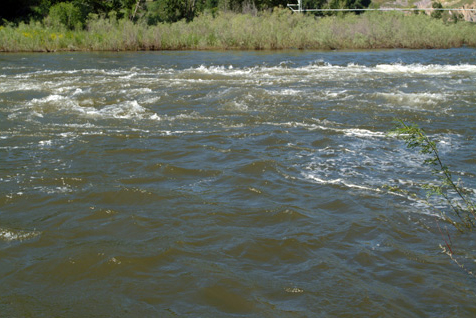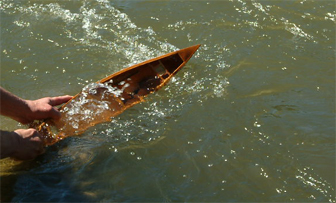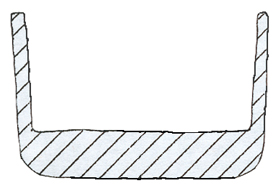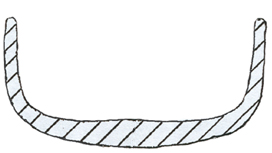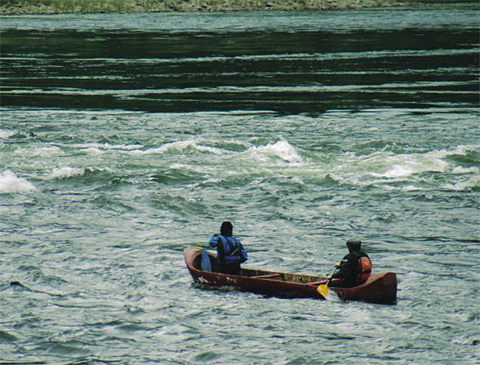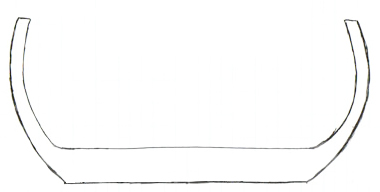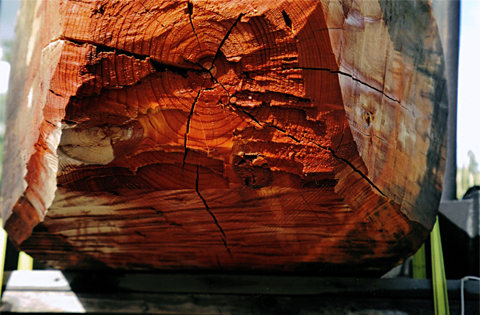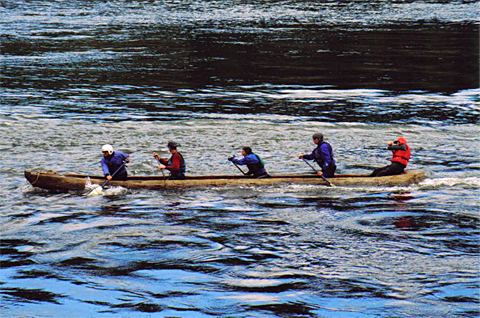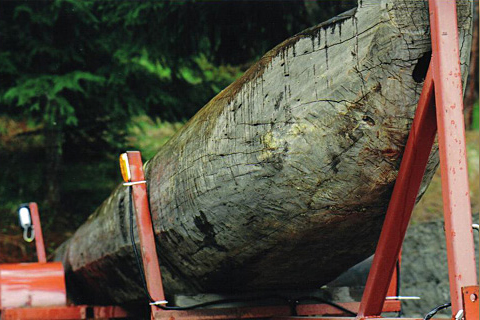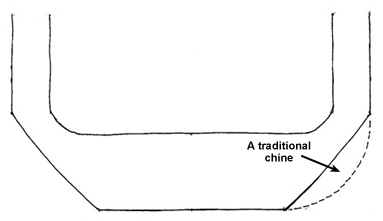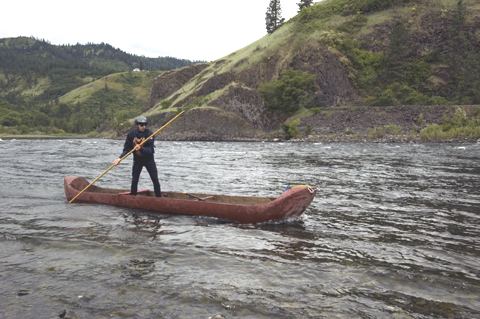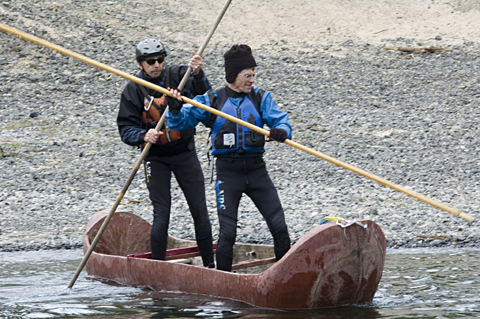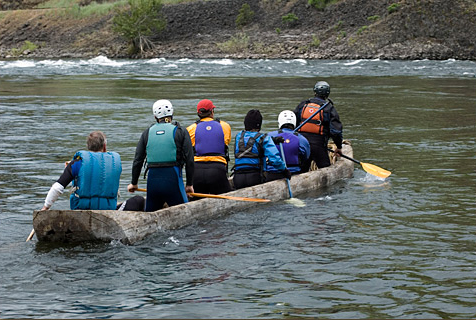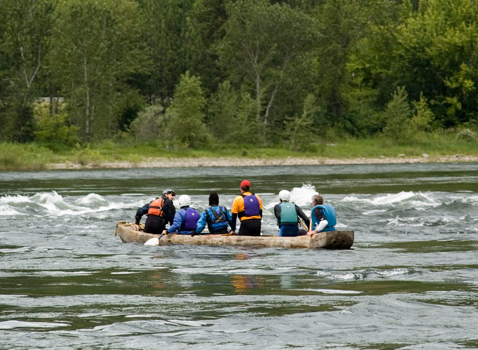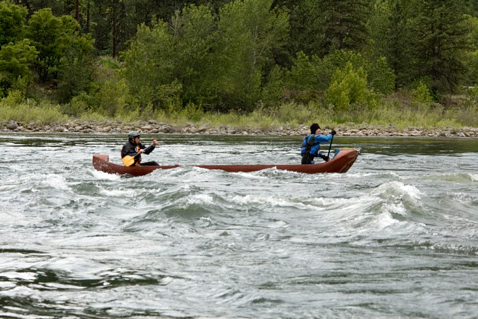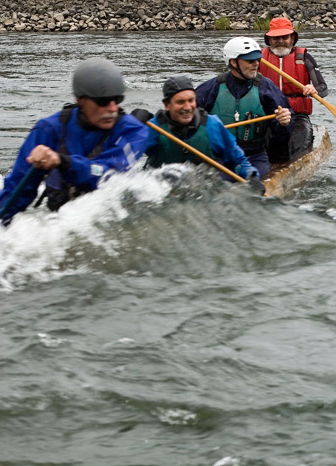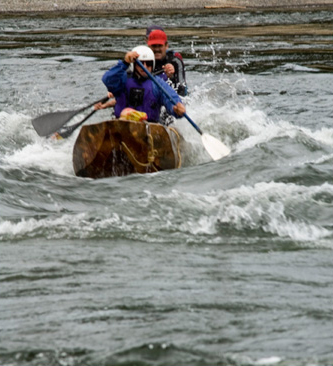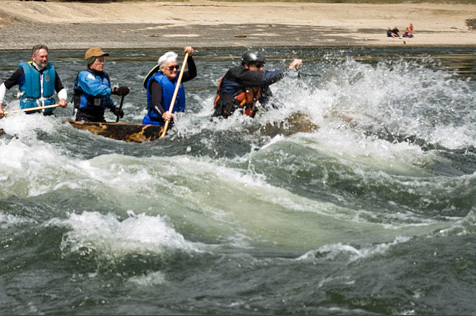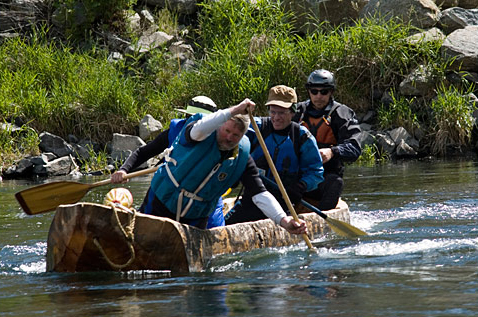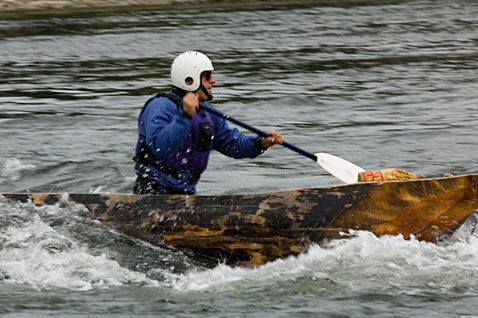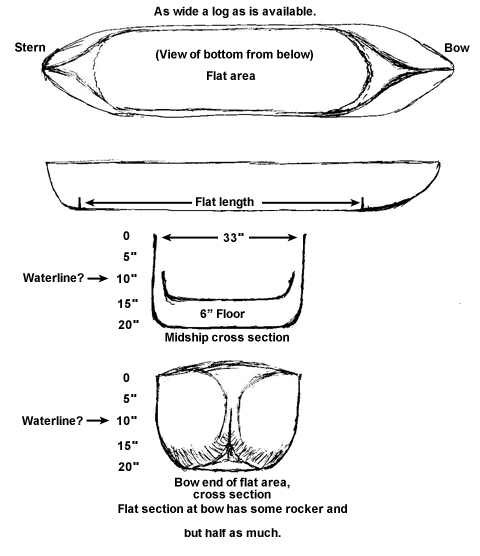A Video Essay
We had just paddled a hollowed log upstream against rapids in a big, fast river—a bit more excitement than I expected—when I began this project in the library. I had been asked, as a scholar and canoeist, to look at our knowledge of the Lewis and Clark canoes. All of the canoes they made were dugouts: one log hollowed out and shaped to work well in the water. There have been a number of excellent articles on the dugouts in the last fifteen years, and much of the hard work—sifting journals for references—has been done by Large, Boss, Chenoweth, Huser, and others.[1]Arlen J. Large, “The Rocky Boat Ride of Lewis and Clark,” We Proceeded On, 21:1 (February 1995), 16-23; Richard C. Boss, “Keelboat, Pirogue, and Canoe: Vessels Used by the Lewis and … Continue reading Chenoweth, who is Curator at the Nez Perce National Park in Spalding, Idaho, has done a remarkable job of finding and cataloguing old Indian canoes on the West Coast similar to ones that Lewis and Clark might have seen. Of course, those West Coast canoes could not be models for the earlier ones carved at Fort Mandan (six canoes, including one short canoe) or at the Great Falls (two additional canoes), or the five new ones made at the Canoe Camp on the Clearwater River. No significant dugouts were carved on the return trip. The small one made at Camp Chopunnish merely for crossing the river soon wrecked and was abandoned. The small ones on the Yellowstone were made for floating downstream only, the two logs lashed together to form a catamaran raft).
Prior research
Although the journals sometimes mention length and breadth or “beam” (some canoes were over thirty feet long and over thirty inches wide), they are almost silent on hull design. The cottonwood trees were split and windshaken; the party made a “stout” canoe—that tells us a little, but not much. What we know for sure about the dugouts, from reading the journals, is very little indeed.
Three separate groups have been interested in the dugouts: the Lewis and Clark scholars, who comb the texts for useful references, and make guesses when they find little information; the replica builders, who would like good guidelines but have had to shape the hulls pretty much on their own; and the canoe historians and designers, who are usually canoeists themselves but not necessarily involved in Lewis and Clark debates. Often these three groups have little contact with each other.
Consider the constraints on the replica builders, beginning with no explicit guidelines from the journals. They are usually operating with a self-funded group of re-enactors, they have to buy a $2,000 log, they often try to use authentic tools (but chainsaws save a lot of time). Their boat will have to be trailered right side up, floated on and off the trailer at boat ramps; therefore a wide, flat bottom is preferable (any V or rounded bottom is much harder to load and transport). The replicas are usually built to float downstream only. Although cordelling is often demonstrated, no hard canoeing against the current is anticipated when the boats are being shaped. Often re-enactors in the boat will not be canoeists. Several scholars have recommended a scow bow, flat bottom and vertical sides. But the scholars, too, are often not canoeists. Canoeists and modern canoe designers shudder, imagining such a long, narrow barge of a boat ascending and crossing the Missouri in flood—it should turn over easily. In “Hull Designs” below we will explain why.
However, a heavy dugout (2,000 pounds), low in the water, bottom heavy, might behave very differently from a modern canoe (70 pounds), drawing only three inches of water, skimming the surface. So maybe modern canoeists don’t know how the scholars’ square-sided dugout would work. Does anyone?
I soon found, to my surprise, that no one had tested these various replicas in demanding conditions: upstream ferries[2]To make an “upstream ferry” is to paddle upstream against the current at a 45° angle in order to cross the river. and eddy seam crossings[3]An “eddy seam crossing” is to cross the line between an eddy and the main current. At that line the swirling eddy current is flowing upstream. in high water—canoeing techniques the Lewis and Clark party probably used many times a day from the Knife River Villages to the mouth of the Yellowstone and up to present day Helena on the Missouri in late May and June, as they crossed to the opposite shore for better poling and cordelling. How were these canoes shaped? How did they behave in river conditions? Was the party loathe to cross to the better shore, because it was dangerous in high water, or did they easily and often cross to the best shore for cordelling?[4]“Cordelling” is pulling the boat upstream by a cord, or rope, the crew either wading in the stream, or walking on shore (“tracking”) One or more men in the boat. We really have not known.
So my job evolved from an overview of the journals and the scholarship, to seeking more subtle clues from Ohio and Voyageur dugout designs in 1800, to what the present dugout makers have come up with and what modern canoe hull designers have to say. In June 2005, my job came to river testing three of the best boats I know in a 13,000 cfs (cubic feet per second) riffle at the Big Eddy of the Clearwater River, near Orofino.
Project Scope
The river is flowing rapidly from right to left, perhaps as fast as 5-6 miles per hour. The water in the foreground is the upper part of an eddy, flowing upstream. The thin white line of foam is the eddy seam. The eddy current collides with the main current, creating the turbulence that is evident at extreme right.
In this preliminary report I would like to solicit comments and advice from fellow canoeists and canoe scholars. I am particularly interested in what we do and do not know of hull design in relation to performance in the river, and therefore in relation to strategies in ascending or descending. The journals are almost silent on all three points.
Why is dugout design and performance important? The Corps, walking the shores or shallows with ropes and tugging their craft upriver, six canoes and two pirogues, has come to a big eddy; they look upstream and see an overhanging cut bank and cliff ahead, with fast, deep water at its base.
They see no option but to cross the river and haul the boats up along the opposite bank, which looks good for a few miles. An eddy on the Missouri in flood can easily travel upstream for a half mile and more. Could they use the upstream eddy for its full length up-river, and then cross through the turbulent eddy seam at the top? Or, fearing the vigorous current at the top, would they have to cross at the bottom of the eddy, and forgo use of a half mile of upstream flow? It made a lot of difference to them, many times a day: a half mile of easy pulling along with the current of the eddy, flowing upstream—if they dared cross the eddy seam at the top.
Another example: although these were freight canoes tracking upriver, they had to go cross current not just when paddled to the opposite shore, but also when cordelled. We know that the bow falling off (turning cross current) was a constant concern while cordelling; if the heavily laden dugout’s bow turns out into the river just ten degrees from the line of the current, the pull on the bow rope is tremendous, and if the water cannot flow easily under the hull (because it is squared on the sides), the danger of tipping the boat upstream is real. Chines—rounded corners between the bottom and the sides—and a properly rounded bow, would help alleviate these cross-current problems. All of this the men knew when shaping the dugouts at Fort Mandan.
For a fuller discussion and demonstration of lining—or “cordelling”—a boat, see the following video, which demonstrates the principles of pulling a boat upstream from rough banks through fast water.
Hull Designs
The tiny glistening wavelets to the right of this miniature replica of a modern canoe show that the current is piling up on the upstream side and dragging the starboard gunwale under water. The effect would be exacerbated if the craft were being cordelled around a shoreline obstruction such as a rock or stump.
Figure 3
“Clearwater Canoe”
Cross-section at 18′ from stern
Sketch courtesy of Bob Chenoweth, Nez Perce National Historic Park. Nez Perce National Historical Park (NEPE) Collection, Spalding, Idaho; NEPE 5047.
Overall length: 25′ 10½”
Outside width, max: 30″
Height: 15″
Handling Side Currents
Determining effective dugout hull design is difficult because a modern canoe “floats,” weighing perhaps 400 pounds with two people aboard, drawing maybe two to four inches of water, while a 2,400 pound dugout with a 7-inch thick floor is a “battleship” with ballast, a heavy hull a foot down in the water, and the center of gravity low. How these two crafts react differently to side currents is a major part of our puzzle. Most people think a long, narrow log will turn over easily. However, I had traveled extensively in Borneo by 35-foot hollowed log in big, swift rivers, and I knew that those huge hardwood logs were surprisingly stable.
The dynamics of a side current in a river is a bit counterintuitive. As the canoe crosses a current coming from the right (upstream), you might expect the boat to be thrown over to the left, downstream. Instead, it is rolled over toward the current by the force of the water rushing under the hull. That is, a canoe in a cross-current is rotated upstream, not downstream. Thus a lake canoe with a keel, catching the cross current as it flows under the boat, is very dangerous in rivers.
The tiny glistening wavelets to the right of this miniature replica of a modern canoe show that the current is piling up on the upstream side and dragging the starboard gunwale underwater. The effect would be exacerbated if the craft were being cordelled around a shoreline obstruction such as a rock or stump.
Anything catching that side current will tend to rotate and tip the canoe upstream. That is also why a straight sided, flat-bottomed boat with no chine, that is, sides and bottom meeting at ninety degrees, is much more likely to be rotated than a chined boat, with rounded sides to allow the cross current to slip underneath with a minimum of friction.
What We Know
Since we do not have hull descriptions of the dugouts and we have very few journal entries on river tactics, especially when paddling, we will have to make some guesses about canoe design. However, we do know some important facts:
- Experienced river men, American and French-Canadian, in an age of river travel, were present when the first boats were built near the Mandan villages, and worldwide, sophisticated canoe designs are thousands of years old.
- The expedition had excellent leadership, and we can assume they did not make silly canoes.
- A dugout canoe could be taken across the river by one paddler without difficulty; on 24 June 1805, Lewis “sent Shannon down the opposite side to bring the canoe over to me and put me across the Missouri.”
- On the other hand, the boats were often cordelled in difficult situations.
On 25 May 1805, Lewis explained:
the wind being against us we did not proceed with so much ease or expedition as yesterday, we imployed the toe line principally which the banks favored the uce off; the courant strong particularly around the points against which the courant happened to set, and at the entrances of the little gullies from the hills, those rivulets having brought down considerable quantities of stone and deposited it at their entrances forming partial barriers to the water of the river to the distance of 40 or 50 feet from the shore, arround these the water run with great violence, and compelled us in some instances to double our force in order to get a perorogue or canoe by them.
Why did they not cross the river at these “barriers,” as usual? On the next day, 26 May 1805, Lewis remarked, “proceeded principally by the tow line, using the oars mearly to pass the river in order to take advantage of the shores.”
Clearwater and Nez Perce Hulls
As a modern canoeist, I began this project with a prejudice: I suspected that the square end, flat-bottomed, straight sided “Clearwater Canoe” (also known as the “Lewis & Clark” canoe because it may have accompanied the party down the Clearwater and Snake for a few days), while described clearly and therefore valuable to scholars, is probably not a good model.
Worldwide, such punt/scow/barge designs are made partly for a man standing up, usually while fishing, to see into the water and spear a fish or throw a net. They can also carry cargo over short distances, and cross the river near the village. However, such blunt end, sharp sided boats are not good for ascending and navigating fast current over distance; the bow does not cut the water efficiently, and the sharp sides, while they feel secure when you get in (“initial stability”) can be tipped over by a side current.
Moreover, a squared boat requires extra effort in hacking a log. I assumed that the Fort Mandan dugouts were not scow design.They were probably part flat-bottomed but with rounded chines, and a moderately sharp entry line, though thick and strong (more like the Nez Perce “Spalding” canoe). It is true that the party’s “stout canoes” were upstream freight carriers, but they also had to be riverworthy. They also would have been made as light as possible, to maximize the payload in relation to displacement. A heavy dugout hull, however, is not the same as a skimming boat, whether it is made of bark, or skins, or Royalex, so I knew that my modern canoe prejudice might be irrelevant. And yet, the Borneo dugouts had slightly rounded bottoms, and rounded chines, and sometimes slightly V-shaped bottoms. A real, dramatic river test was the only way to tackle these issues. How does a log paddle in real water—say, the Missouri in flood?
The Replica Dugouts
Overall Length: 18′ 6″ (bow, 32½”; stern, 291/2″)
Width, outside, maximum: 31″
Width, bottom: 22″ (c. ⅔ of width)
Height, 14½”
Thickness, gunwales, 1″; floor: 3″
Flair & chine: c. 5″
Chine angle: 45°–55°
Weight: c. 800 pounds
The only way to answer the question “How do dugout canoes handle moving water” was to paddle a log. Which log? First, I had to find dugouts ready to launch, not sitting in front of a museum. I have been in touch with representatives of three groups of dugout replica builders: Tom Ronk, of The Discovery Corps of St. Charles, Missouri; Walt Marten, of the Honor Guard of Great Falls, Montana; and Phil Johnston, of the Hog Heaven Muzzle Loaders of Orofino, Idaho. The names, in each case, are the principal canoe designers and builders for each group, with plenty of help from their members. Members of these three Lewis and Clark reenactment associations know their Lewis and Clark history and the journals very well, and I have had many helpful conversations with them.
There are no doubt other dugout associations in the country not associated with Lewis and Clark, and I would welcome contact with them, but in those bicentennial Lewis and Clark years we knew that every floatable replica dugout might be coming through Montana. After much visiting and talking and measuring, and much generous cooperation from the groups, I was able to gather three logs for a river test at Orofino on 12 June 2005, with 12 expert paddlers from Western Montana to explore what logs can do in extreme situations.
Marten’s 18-foot “scout”
A relatively lightweight and finely carved cottonwood “scout” canoe by Walt Marten of Columbus, Montana, 18′, 6″ long, 800 pounds, 31″ wide. The flat-bottom is 22″ wide, with a sharp side edge, about 55 degrees, up to slightly rounded sides, 14″ high top to bottom. The gunwales are only one inch thick—unusually thin—and the floor is 3″ thick, also comparatively thin among “replica” canoes. This canoe is distinguished by its light weight and fairly sharp entry line at the bow. It is stained red, and in the pictures it is distinguished by its color, high ends, and riding high in the water. This canoe seems almost halfway between a “primitive” dugout and a modern canoe, but of course it may be a completely authentic replica of the “small” or “scout” canoe, since we have no idea just what they carved. And remember: the Corps men were skilled with the axe and adze, and proud of it, while museums often want “primitive” looking replicas that suggest rough, hand-hewn pioneer work. The Borneo boats are well shaped and smooth as silk, with no better tools than Lewis and Clark had.
Johnston’s 20-foot “scout”
Phil Johnston of Orofino has made more than twelve dugouts (including the one in the BLM Lewis and Clark Bicentennial poster), and this is his most recent, put in a pond just a week before our test put it in the rapids. It is 19′ 10″ long, 33″ wide and weighs about 1400 pounds, made of Ponderosa pine. The flat bottom is 28″ wide. It has minimum chines, about 3-4″ at 55-60 degrees, then a vertical side, 19″ high top to bottom. The gunwales are 2″ thick, and the bottom is 6″ thick, twice as much as Walt Marten’s. The bow is quite wide and blunt, though narrowed in half at the entry line. Phil, and the canoeists standing on the bank, were worried about the sharp, vertical sides of this new boat in the heavy cross currents, so we paddled this boat last.
Figure 9
Cross-Section
Phil Johnston’s ‘Scout Canoe’
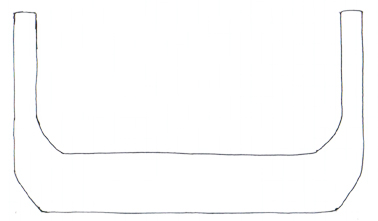
Sketch by Bill Bevis.
Length overall: 19′ 10″
Width, outside: 33″
Width, bottom: 28″ (4/5 of width)
Height, outside: 19″
Depth, inside: 13½”
Thickness, gunwales: 2″; floor: 5½–6″
Chines: 55°–60°; 3–4″
Weight: c. 1400 pounds
Johnston’s 33-foot canoe
This is Phil’s “A” boat, one of his first. It is 33′ long, 33″ wide, and weighs 2400 pounds. The flat bottom is 17″ wide, only a little more than half the canoe’s width, which one would think might make it unstable, but it comes up to 45 degree straight chines a foot wide (huge and steep chines), then to vertical sides, 21″ top to bottom. The bottom is 7″ thick, and Phil said the canoe was very stable in easy water.
All of Phil’s canoes are distinguished by this “ballast” bottom, heavy and sitting low in the water. We had absolutely no idea how it would paddle, and we could not find anyone in the country who had tested such a boat in class III water such as Lewis and Clark ascended. No doubt (since I know silliness), some guys somewhere paddle radical dugouts, but they are not connected to the Lewis and Clark circle and they have not published their results. Shame on them. I hope they get in touch.
Testing the Dugouts
Allan Burgmuller, an American Canoe Association open-canoe slalom champ, poles the 18-footer through the Clearwater River’s Big Eddy.
The Big Eddy
Phil Johnston at Orofino suggested the Big Eddy on the Clearwater just 16 miles below town, at Lenore, and we all wanted to paddle as early in June as possible to catch the high water. The site was perfect: 13,000 cfs of water coming around an S curve then dropping into a constriction with standing waves and huge eddies to each side, a safe runout below. In addition, an underwater shelf came about half way across the river from the bank opposite our launch eddy, under the waves, creating some nasty turbulence, boils and small whirlpools. One could hit the near side of the waves and have some pretty straightforward, Class II,[5]There are six general classifications of river conditions, from a recreational perspective. Class I allows a dreamy, mostly hands-free drift; Class II, with occasional waves that may be as much as 3 … Continue reading two- to three-foot standing waves, or go further over, and have more complicated and unpredictable water. Below the waves, because of the shelf, the water was roiled and strong. The eddy line was not very sharp, but it was strong: a 4-knot eddy current[6]A knot is a measure of nautical speed, equivalent to 1.15 miles per hour. A 4-knot current is flowing at approximately 4.6 miles per hour. eighty yards wide, swept up to a sand point and then curved in at right angles to the fast current above the waves. Once in that upper eddy, you were going to be delivered to the river. Yet it was all safe below, and we had a jet boat and kayak backup. Dick Barrett of Missoula and I had organized a crew. Everyone was experienced—several nationally and internationally—in kayak and canoe, and came with wetsuits, floatation devices, paddles and helmets. (Well, I forgot my helmet.) We were ready, but had not a clue what to expect.
Eddy Turns, Upstream Ferries, and Poling
On the beach, I outlined how little was known about the dugouts, how Lewis and Clark had ascended the Missouri in May-June high water, and that undoubtedly they had to cross the river often for better cordelling. No one we could find had tried dugouts in demanding conditions. I asked the crews to pay special attention to crossing eddy lines and upstream ferries. We wanted to know, first, would they have avoided crossing the Missouri except as a last resort, and if they did cross, could they use the upstream eddies or not, how dangerous was it, and how much ground would they lose being swept downstream?
Walt’s 18-footer took 3 paddlers, and eased out into the lower eddy. I took a crew of five others in the big 33′ canoe. We had those on shore check our trim—we wanted to be pretty much neutral, with weight evenly distributed—and then we moved off shore into the eddy, trying draws and reverses to stop and go and turn and get the feel of the boat. By then we were in the upper eddy, not really by choice, but the boat felt stable and we went with the flow towards the upper eddy line and the main current, counting on decisiveness and top paddlers to handle whatever happened; we entered the main current at moderate speed and ninety degrees (no choice at that point), did not flip (surprise), and turned downstream near the eddy seam paddling hard to gain momentum and stability. The boat was rock solid.
Within thirty minutes the third boat (the 20-footer) was in the water, crews were switching boats and places, and whooping and hollering. Gradually we all tried more action in each boat, ferries through the turbulence, more aggressive crashing through the seam into the fast current, more waves. All day, in 6 hours of paddling, no one went over. At one point I was in the bow of the 20-footer when we surfed upstream for three seconds, bow buried in the foam. We came out of that two thirds full of water—a fair approximation of a fully loaded dugout—and had no problem paddling to shore. The heavy boat was slower to respond, of course, but not notably unstable.
Allan Bergmuller also did extensive poling (hand over hand, not walking) of the 18′ canoe in shallow and deep, calm and turbulent water. He stood throughout with no problem (even when rammed amidship by the 33′ canoe, which was, shall we say, committed to its line).
The last hour of the day we spent paddling down to our eddy from a launch site a mile above. The current there was fast (3-4 knots?) but calm, resembling the fast sections of the Missouri Breaks, and we could try a few things not appropriate in the rapids. The 33’and 20′ boats crossed from one bank to the other in an upstream ferry to measure how far they were swept downstream. Not a bit. We each landed at the other bank straight across the river. We had already proved that the trickiest water was no problem. Now we knew also that they could ferry across without losing ground. Why would they not have crossed whenever the opposite bank was even marginally better for cordelling? There may be reasons they did not cross often, but those reasons don’t include any incapacity of the dugouts.
Then, as we descended the fast, flat water, we tried some paddling in reverse, in upstream back ferries, as if trying to avoid rocks in the descent by slowing down and moving sideways, a very effective way to position yourself in the river (as a raft does, by rowing back against the current). Some canoes are pretty unstable in this mode. Not the logs. No problem. We have to assume that back ferries were one of their tools in the descent (especially on the Yellowstone in a catamaran). We also tried fast eddy turns in and out of small eddies as we went. No problem. The boats were slow in turning, of course, though the light 18′ (800 pounder) was much faster, but once the logs started their turns, the momentum made a nice sweeping finish, with very little rocking. Only once in the stern did I have to do a brief upstream sculling brace, to counteract an early end to the bow’s downstream brace.
Pictorial Essay
Focus Group
© 2005 Photo by Rohn Wood for VIAs Inc.
The crew of the 33-footer studies their prospects. Notice that four of the paddlers are kneeling erect. That is because, first, sitting back on one’s heels is extremely tiring; the Corps of Discovery’s canoeists would have supported their butts against bales of cargo. Second, the erect posture keeps their center of gravity low while enabling them to use a vertical “catch” with the paddle and thereby achieve maximum power with each stroke.
Steady as She Goes
© 2005 Photo by Rohn Wood for VIAs Inc.
Allen Burgmuller, in the bow, shouts past Bill Hudson, Charlie Stevenson and Rod McIver to author Bill Bevis in the stern, “Hey, it’s really steady!” When crossing an eddy seam, paddlers in modern lightweight canoes must lean away from the current in order to counteract the tendency of the craft to flip. When the big dugout canoe was paddled across the eddy seam into the main current, it showed no tendency to roll or flip.
Upstream Ferry
© 2005 Photo by Rohn Wood for VIAs Inc.
Allan Burgmuller and Chuck Anderson hold Marten’s 18-footer in a ferry angle in fast-moving water, allowing the current to move them across the river without losing too much headway.
Steady as She Goes
© 2005 Photo by Rohn Wood for VIAs Inc.
While Bill Hudson, Charlie Stevenson and Rod McIver grin in anticipation, Dick Barrett gets his “dry suit” drenched by a standing wave, and the 22-footer ships some water. Dick feels that the thick gunwales in a dugout minimize the destabilizing effect of water inside the boat sloshing from side to side. Somewhat surprisingly, no one went over all day.
Easy Exit
© 2005 Photo by Rohn Wood for VIAs Inc.
Bill Rossbach, Eric Kress, and Mike Johnson (hidden) take the 22-footer through turbulent water without needing to “brace,” or lean to keep the boat upright.
Peeling Out
© 2005 Photo by Rohn Wood for VIAs Inc.
From the bow of the 22-footer the author executes a draw stroke, which allows the boat to exit an eddy in a surprisingly crisp “peel out.”
Surfin’ the Rapids
© 2005 Photo by Rohn Wood for VIAs Inc.
Bill Rossback and friends (Eric Kress and Mike Johnson are behind him, out of the photo) ride down the front of a wave to somewhat offset the velocity of the downstream current. They found maneuvering the 22-footer upriver with a minimal crew required a lot of power on the paddle.
Considerations and Qualifications
- The test used excellent paddlers with modern equipment. We all agreed that with river men among them to instruct, such as Clark and Pierre Cruzatte, by the time the Corps reached the Yellowstone they were experts. They were also in their twenties; we averaged 50 years old. They were a lot stronger. Their one piece paddles, judged by museum paddles of the day, were probably a lot like Feather Brand cheap paddles today. To a man, our hot shot crew agreed that the Corps could have done anything we did, and more. A draw stroke, a high brace, ruddering—this was not news to voyageurs.
- We tested the canoes without several thousand pounds of freight. Yes, but on at least three occasions the 20′ and 33′ canoes were paddled half-full to full of water. We estimated that the large canoe probably held 50 to 70 cubic feet of water, or about 3,000 to 4,300 pounds (Boss estimates their loads at up to 6,000 pounds). So loaded, the 33-footer had its bow submerged in a whirlpool, turned from upstream to downstream, lumbered down the eddy line turbulence and was paddled to shore by 6 people (another thousand pounds). All agreed that the boat was stable, just low and slow. We think that loads would have made our paddle less fun, but if the job was just to reach the other shore safely, we all felt that 6,000 pounds of freight would make no essential difference in the boat’s handling capacity.
- One of the most frequent problems mentioned in the journals was wind and waves forcing them ashore. After having no problems paddling swamped canoes, we wondered if the waves threatened to wet the cargo, rather than put the canoe in jeopardy.
- We had a lot of paddlers. Not after the first trials proved the boats so stable. Often two or three took the 18′ and the 20′ boats, and the 33′ boat was paddled in very heavy water by four. Certainly two or three people could have handled it gently and slowly.
Preliminary Conclusions
- The boats behaved in essentially similar ways, differing in degrees. It seems that weight and overall width of bottom are distinguishing hull characteristics. The straight sides, or the chines, made little difference. We were surprised, almost shocked at this development, and I hope to talk more to canoe historians and hull designers about the characteristics of heavy, “battleship” hulls versus modern canoes.
- Since the Lewis and Clark canoes were built to carry loads, it is very possible that the lighter Marten 18′ design (800 pounds) would have been more of a ballast battleship when loaded, and of course the lighter boat carries more weight. But they said “stout canoes,” and they certainly regretted the time spent making more, so possibly they feared breakage and cut them thick. We cannot rule out any particular hull: we paddled one of the lightest, and one of the heaviest canoes that we could find anywhere. We paddled them both empty and full of water, and found them riverworthy in all conditions.
- We found no reason to think that the Lewis and Clark ascent of western waters was limited by the dugouts’ performance in the river.
- We agreed, as canoeists, that while the widest bottom in the middle was paramount, a slightly rounded edge, and an efficient, narrow but rounded entry line at the bow, was preferable for both cordelling and paddling. These boats had stability to spare, and river users in 1800 were very accustomed to small boats. There’s no reason those paddlers would not have sacrificed a bit of stability to more efficiency while dragging a hull upstream. This is not the situation with the reenactment groups, who need a stable boat full of less experienced paddlers for short distances.
- The rule of thumb on the Missouri was a wide flat bottom for the sandbars. But the Mandan canoes were built for an ascent in high water, and one would think that hull efficiency might easily have equaled shallow draft as a consideration.
Design
We still do not know enough about the river dugout hull designs familiar to the party through Ohio and Mississippi traditions and voyageur traditions. I am hoping that by re-reading contemporary primary sources (such as Cramer’s Ohio and Mississippi Navigator) in the light of our river trials, and looking more at Canadian traditions, I will find more clues to boat designs which might have been influential at Fort Mandan. For instance, some of the discharged French engagés who helped the expedition up the Missouri to the Mandan villages built a dugout to return to St. Louis. At this moment, within sight of the party, French knowledge of still-water bark designs, light enough to portage, as well as voyageur knowledge of dugouts, would have met Clark’s knowledge of dugout river designs of the Ohio, the Mississippi, and the lower Missouri. Cruzatte, the experienced French river man, was given charge of one of the Corps of Discovery’s two pirogues, but there is no mention of whether he helped the Lewis and Clark dugout party design the six Fort Mandan canoes in late February of 1805. Still, it was a long winter at the villages, with not much to talk about. You would think that Clark and Cruzatte, as river men, sometimes talked boats. What did they know?
Technique
How many paddlers were there? We know the big canoes carried four to nine men. What was meant by “paddles” vs. “oars” in Lewis’s nomenclature; “seats” vs. thwarts (cross-braces); were they kneeling or sitting? Also, how was the cordelle attached?
Strategies
How often did they cross the river and why? From Fort Mandan to the Great Falls of the Missouri, what were the differences between the dugouts and the two pirogues, in terms of handling in swift currents? (The pirogue replicas from St. Charles are wonderfully stable and efficient; I observed them in June 2005 for three days at the mouth of the Marias.) How much did Clark cross to (or near) his observation points? The “small” or “scout” canoe was used often for scouting and hunting, with two to four men. How much did the need to stick together and occasionally pool all labor to manhandle the pirogues affect their canoeing choices? That is, boat design is not the only variable in their choice of cordelling one bank vs. paddling across to a better bank.
I doubt very much that we will find “silver bullet” passages that answer these questions, but we may find a preponderance of hints that make new conjecture possible and plausible. After all, they spent their days walking, pulling, sailing, paddling through the water. Apart from the occasional mention of a crumbling bank, a rapid, wind and waves, we know very little about most of those days, about what canoeing choices they made, hour by hour, and why.
Notes
| ↑1 | Arlen J. Large, “The Rocky Boat Ride of Lewis and Clark,” We Proceeded On, 21:1 (February 1995), 16-23; Richard C. Boss, “Keelboat, Pirogue, and Canoe: Vessels Used by the Lewis and Clark Corps of Discovery,” Nautical Research Journal, 29:2 (June 1983), 68-87; Robert Chenoweth, “Wali-mliyas: The Nez Perce National Historical Park Dugout Canoe Collection and Dugout Canoe Use Among the Nez Perce Indians,” Northwest Journal of Anthropology, 42:2 (Fall 2008), 167-204; Verne Huser, On the River with Lewis and Clark (College Station: Texas A&M University Press, 2004). |
|---|---|
| ↑2 | To make an “upstream ferry” is to paddle upstream against the current at a 45° angle in order to cross the river. |
| ↑3 | An “eddy seam crossing” is to cross the line between an eddy and the main current. At that line the swirling eddy current is flowing upstream. |
| ↑4 | “Cordelling” is pulling the boat upstream by a cord, or rope, the crew either wading in the stream, or walking on shore (“tracking”) One or more men in the boat. |
| ↑5 | There are six general classifications of river conditions, from a recreational perspective. Class I allows a dreamy, mostly hands-free drift; Class II, with occasional waves that may be as much as 3 or 4 feet high, requires some control of the watercraft; Class III requires a boatman who can cope with rocks, holes, eddies, and sudden drops; Class IV rapids are real soakers, representing the upper level on the “fun scale”; Class V is scary for the best boater because of turbulent currents, treacherous waves, holes, and hidden obstacles; Class VI is off the charts, even for the experts, except during favorable river levels, which rarely occur, even for short periods of time. These classifications, especially the higher ones, are subjective. They are also different in Canada, as we discovered in the Nahanni. Conditions may change within days or even hours. |
| ↑6 | A knot is a measure of nautical speed, equivalent to 1.15 miles per hour. A 4-knot current is flowing at approximately 4.6 miles per hour. |
